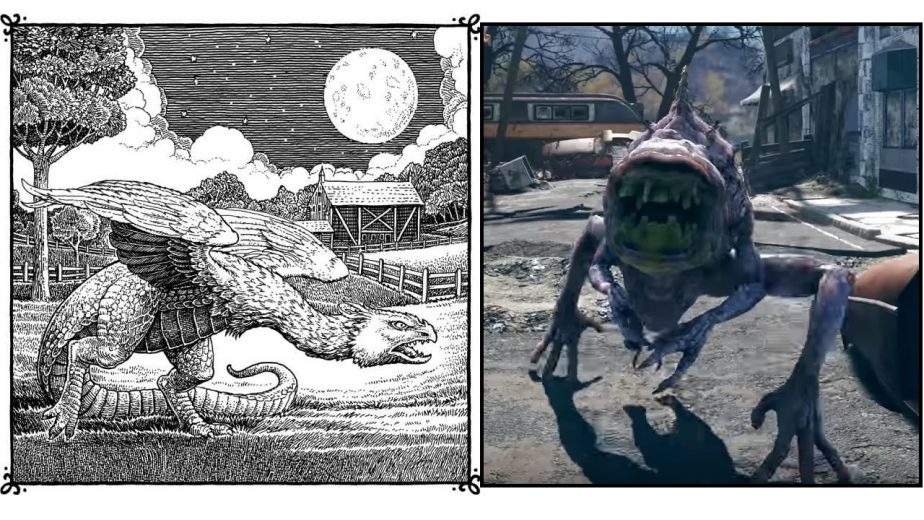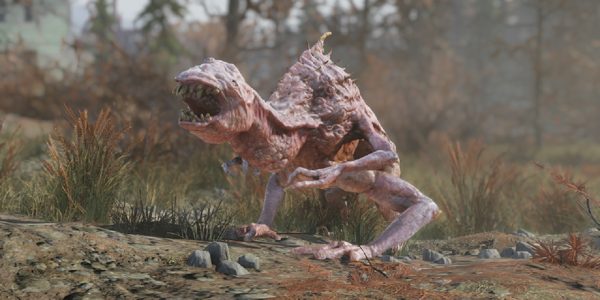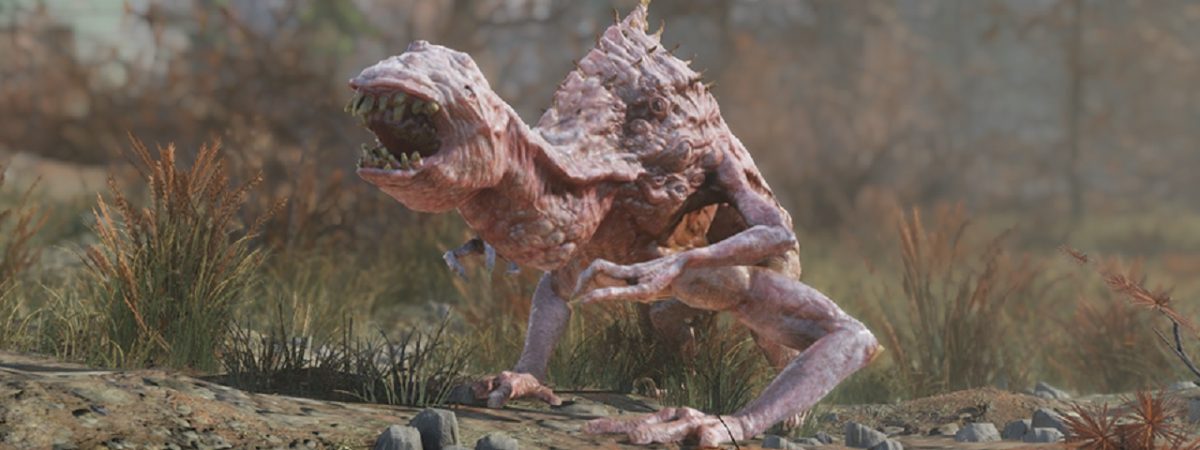Fallout 76 is now less than two weeks’ away from release, and in anticipation of the launch, Bethesda has released a new series of YouTube videos entitled; “Tales From the West Virginia Hills.” These videos each focus on one of the new Fallout 76 creatures; each of which is based upon folklore from West Virginia. The first of these is the disgustingly mutated Snallygaster.
Fallout 76 Creatures: The Snallygaster Revealed in “Sideshow Snallygaster”
The Snallygaster’s first appearance was in one of Fallout 76’s E3 trailers, where a brief clip of gameplay featuring one was shown. At the time, Todd Howard said that the team at Bethesda used the folklore of West Virginia for inspiration when designing new monsters. In this newest video, “Sideshow Snallygaster,” the monster appears in an old-fashioned radio play. Presumably a fictional story from before the bombs fall, the tale follows a young boy and his friend at a carnival. There, the carnival barker is selling tickets to a sideshow where a “Snallygaster” is supposedly an attraction. The boy’s father believes that it is merely a hoax, but of course, it is all too real.
The Snallygaster is a very old monster from West Virginian folklore; it originates all the way back to the 1730s, where German settlers knew it as the “Schneller Geist,” a name which literally means, “Quick Ghost.” Those original tales call the monster bird-like and demonic. It had a metallic beak filled with sharp teeth which it used to suck the blood of its victims. In an effort to ward off attacks from the beast, the settlers painted seven-pointed stars on their barn doors.”Sideshow Snallygaster,” actually does address the fact that the Fallout 76 snallygaster doesn’t have wings; a notable deviation from the tales. Of course, the snallygaster here appears to be some horribly mutated animal, not a demonic bird.
 After years in obscurity, the Snallygaster resurfaced in 1909, when a sighting was reported. The story so enthralled the nation that President Theodore Roosevelt supposedly almost set out to hunt the beast. Indeed, the Smithsonian Institute offered a handsome reward for its body. However, the story was a hoax. In an effort to boost readership, a West Virginian newspaper editor and reporter had invented it all.
After years in obscurity, the Snallygaster resurfaced in 1909, when a sighting was reported. The story so enthralled the nation that President Theodore Roosevelt supposedly almost set out to hunt the beast. Indeed, the Smithsonian Institute offered a handsome reward for its body. However, the story was a hoax. In an effort to boost readership, a West Virginian newspaper editor and reporter had invented it all.




